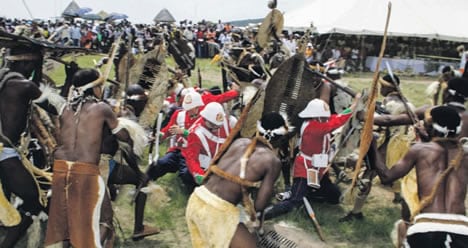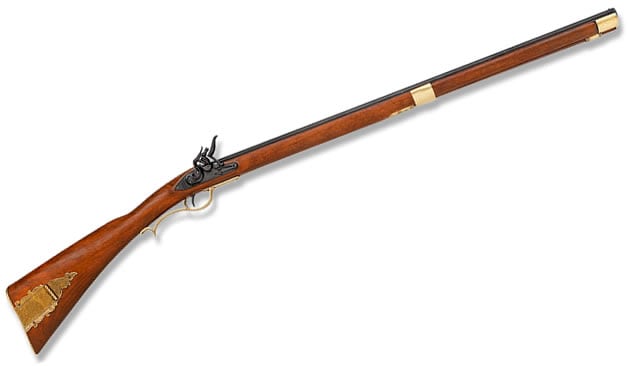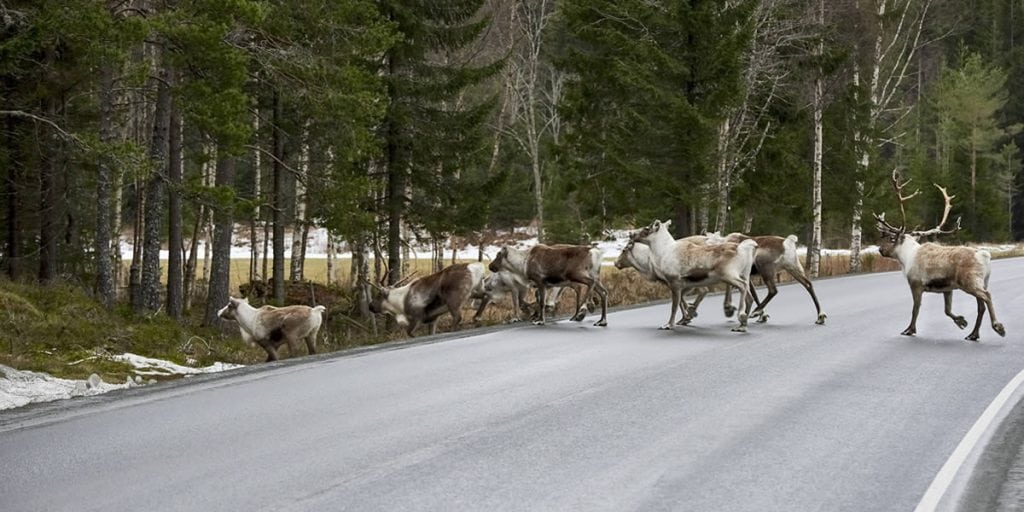Editor-in-Chief – Charles R. Drago
How Arrogance and Prejudice Trumped Technological Superiority of Guns Over Knives

As of the morning of January 22, 1879, the Martini Henry breach loading, single shot, lever-actuated rifle with which the British Army had been equipped was globally recognized as being what today we would describe as a “high tech” weapon of choice for then-modern European military forces.
The Kentucky Longrifle: Davey Crockett’s “Ole Betsy” Likely Not at The Alamo

Few guns in American history are more legendary and less accurately depicted in use than the so-called Kentucky longrifle. In its most famous, romantic iteration, the gun is said to have been wielded by Davey Crockett in 1836 during the 13-day siege at The Alamo. American schoolchildren who received far too great a proportion of their history lessons from popular 1950’s television programs were all but hypnotized by images of actor Fess Parker in his Disney-produced role of Davey Crockett fighting the Mexican hordes with longrifle “Ole Betsy” in his hands.
How Poorly Reasoned Government Procurement of Cavalry Long Guns Led to Defeat at Little Bighorn

Of all the disadvantages that contributed to the annihilation of Brevet Major General George Armstrong Custer’s five-troop battalion at the Battle of the Little Bighorn –among them superior numbers of enemy forces (a 5:1 ratio seems a safe bet), criminal disobedience of direct orders by junior officers in command of support battalions, and terrain so inimical to cavalry maneuvering as to negate every advantage commonly enjoyed by mounted troops in generically similar situations – none was more devastating than the inferiority of the Seventh Cavalry’s government-issued single shot carbines.
Hiking the Little Bighorn: Fire + Science = Truth

In the space of less than two hours on the hot, dusty Sunday afternoon of June 25, 1876, Brevet Major General George Armstrong Custer led five troops of his Seventh U.S. Cavalry – 200-plus souls – to annihilation by Lakota (Sioux) and Cheyenne warriors on the bluffs overlooking the Little Bighorn River in eastern Montana.
Preserving the Planet: Impassioned Stewardship and Enlightened Interaction

April 22 marks the 48th anniversary of Earth Day, the international environmental force with a mission “to diversify, educate, and activate the environmental movement worldwide.”
The first Earth Day, in 1970, mobilized 20 million Americans of diverse backgrounds. By 1990, after passage of the landmark Clean Air Act, Clean Water Act, Endangered Species Act, and other groundbreaking environmental laws, Earth Day had swollen its ranks of supporters to 200 million people in 141 countries.
Today, the Earth Day Network stands as the planet’s largest recruiter to the environmental movement. More than 1 billion people from 195 countries participate in Earth Day activities – the largest civic observance in history.
Hunting as a Means of Wildlife Management

At first blush, the process presents as counter-intuitive. How can preservation arise from elimination? That is the question raised by opponents of hunting when they argue against the notion that hunting contributes to wildlife conservation.











